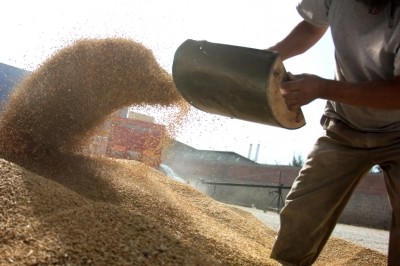FDA rule on feed, animal food transport sees welcome updates

The Food Safety Modernization Act (FSMA) rule on Sanitary Transportation of Human and Animal Food published by the FDA in the Federal Register on Wednesday governs the movement of products by rail or motor vehicle and seeks to prevent contamination during transportation. An initial version was released in February of 2014 and had raised concerns about some of the practices and processes outlined.
The revisions offers feed and food transporters, shippers and loaders much greater flexibility and carries less burdensome requirements than the originally proposed rule, said David Fairfield, vice president of feed services with the National Grain and Feed Association (NGFA). However, the new rule does not include all of the NFDA’s recommendations.
“We appreciate FDA engaging in the stakeholder process and we believe FDA listened to the industry concerns and reflect much better the realities and what is needed,” he told FeedNavigator. “We have a much more workable and practical rule that what was originally proposed.”
Revisions
The initial proposed rule did not completely take into account how feed and food are transported in the US, said Fairfield. And several of the initial sections have been altered.
Previously, the rule would have required shippers to provide information on the last three loads in a bulk container. In the amended version they only have to provide information on what was last transported, if asked, he said.
The NGFA had requested the FDA to relieve shippers who consistently carry the same or similar products from that reporting onus.
“It was one of those activities that we asked that FDA exempt, but they did not choose to do that,” said Fairfield. “But they did lessen the regulatory burden associated with that.”
The American Feed Industry Association (AFIA) said it was pleased to see changes made to the requirements for reporting and maintaining records.
However, while co-products of human food going to animal food but not receiving additional processing are exempt from the rule, finished animal feed going to a farm is not exempt, according to the association. “The risk based determination FDA used for human food co-products should be the same for finished animal feed,” it added.
Rule details
The rule applies to shippers, receivers, loaders and carriers who move food for people or animals in the US or to the US with the intention that the product will be consumed in the US, according to the FDA. It builds on work established both in other sections of FSMA and the 2005 Sanitary Food Transportation Act.
It also addresses the maintenance of vehicles and transportation equipment, temperature controls, prevention of certain kinds of contamination, training efforts in sanitary practices and record maintenance, said the FDA in the document. But, it does not apply to products that are moved through the US that do not enter domestic use or that are moved inside the US by ship or air.
“This rule creates new requirements for the sanitary transportation of human and animal food by motor vehicle and rail vehicle to ensure that transportation practices do not create food safety risks,” said the FDA. “Practices that create such risk include failure to properly refrigerate food requiring temperature control for food safety, the inadequate cleaning of vehicles between loads, and the failure to otherwise properly protect food during transportation.”
Small businesses, those with fewer than 500 employees and carriers who do not also act as shippers or receivers or that have less than $27.5m in annual receipts have two years to comply with the rule, according to the FDA. Other businesses have one year to comply.
“The total annualized costs are estimated to be approximately $113m per year, estimated with a 3% discount rate, and $117m per year, estimated at 7% when discounted over 10 years,” said the FDA. “We do not have sufficient data to fully quantify the benefits of this regulation.”
There are some groups that are exempt from the requirements these include transportation activities taken by a farm, movement of human food by-products intended for use in animal food with no other processing, groups that have less than $500,000 in annual revenue transportation and movement of food or feed that is completely enclosed – unless it has to be maintained at a specific temperature for safety.







